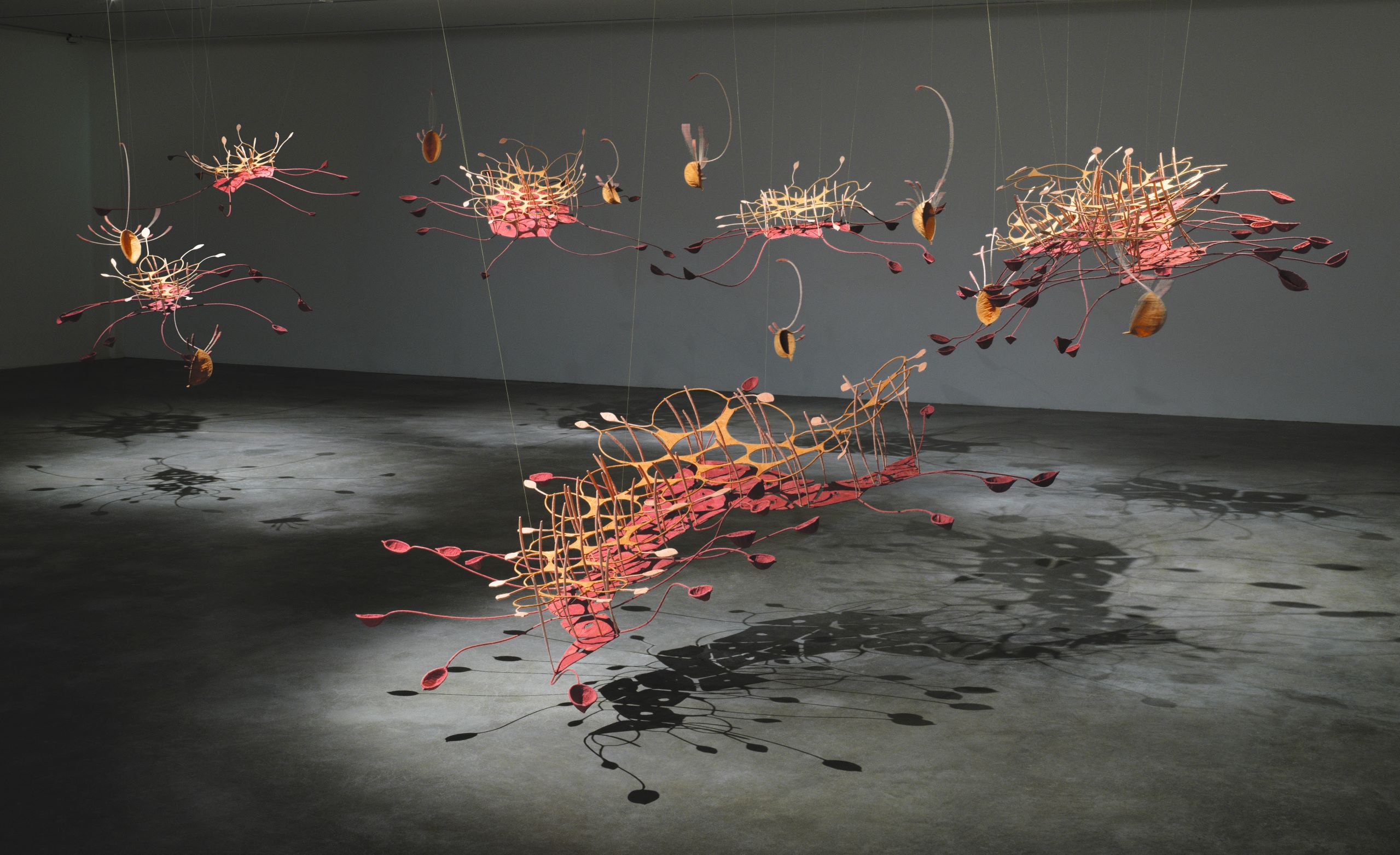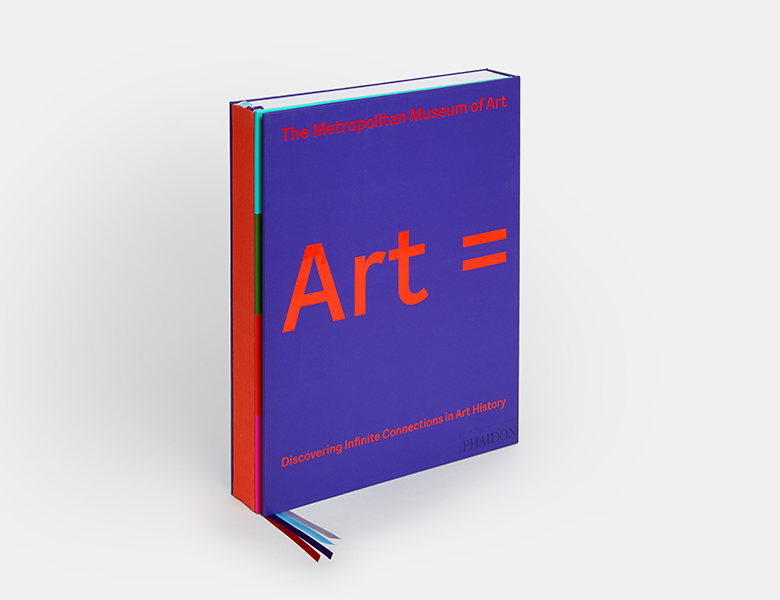
Art = Place
Our new book Art = doesn’t just explore 6,000 years of art history via 800 works from The Met’s collection. Its glossary is also filled with fascinating facts and connections. In our new series, we examine how location can be key in artistic creation
There are always plenty of satisfying, new ways to appreciate classic works of art. Our new book, Art =, offers a fresh and unconventional approach to exploring 6,000 years of art history through 800 masterpieces from The Metropolitan Museum of Art's collection. This ground breaking book — organised by thematic keywords — gives readers fresh and unconventional ways of engaging with visual culture; across these beautifully illustrated pages, you can find unexpected links between, say, a Tiffany lamp and an ancient Greek bottle.
However, there’s more to the book than these fascinating linkages. In a new series, we’re looking at how the book's glossary guides us through some of the pivotal techniques, locations, eras, schools and movements. Its bite-sized overviews bring to light a series of surprising discoveries. Take geography’s role in artistic creation. It can be as small a territory as a modest river valley, or as large an expanse as an empire, but place helps us appreciate and understand artistic production, just as it helped these regions artist create their immortal works. Take a quick tour of the world's great artistic regions with us.
Dutch Golden Age A period in the history of the Netherlands, roughly spanning the seventeenth century, in which Dutch trade and exploration, scientific advances, military successes, and artistic developments were among the most acclaimed in the West. Dutch Golden Age artists were leaders in the creation of still lifes, landscapes, and genre painting, the popularity of which was linked to Protestantism, the secularization of Dutch society, and a newly wealthy middle class.
Etruscan Art Occupying central and northern Italy, the Etruscans flourished from the beginning of the seventh century BC until they were subsumed into Roman culture in the second century BC. Although the Etruscans carried on extensive trade with ancient Greece, their art—tomb paintings, sculpture in stone, bronze and terracotta, gold jewelry and ceramics—is stylistically distinct from any contemporaneous art.
Hudson River School This loose group of landscape painters lived and worked primarily in the Hudson River valley, from New York City to the Catskill Mountains, from around 1820 to 1870. Their untamed landscapes echoed a growing popular appreciation of the wildness and authenticity of unspoiled scenery. Some of the well-known early Hudson River School artists were inspired by Romantic painting.
Indian Art Created in the birthplace of both Hinduism and Buddhism, historic Indian art often expresses religious themes. Images of the divine Buddha in human form first appear in the first to third century AD, while the fourth to sixth centuries witnessed a powerful flourishing of Hindu art. The Islamic Mughal period, from the sixteenth to the eighteenth centuries, saw a flowering of architecture and painted manuscripts. The influence of traditional styles and handcrafts can be found in the work of many modern and contemporary Indian artists.
Iranian Art The art from Iran presented in this volume extends back to the fourth-millennium BC Bronze Age, when painted pottery was created by a variety of cultures in the region. The Achaemenid Persian empire, the largest the ancient world had seen, flourished from the sixth to fourth centuries BC. Centuries later, the rich Islamic Safavid dynasty (1501–1732) saw the production of exquisite manuscript paintings and carpets. Work by Iranian artists today often seeks to address the region’s long traditions, alongside contemporary concerns.
Italian Renaissance The Italian Renaissance began in the fourteenth century in the city-state of Florence and spread across the Italian peninsula, reaching its artistic peak in the fifteenth and sixteenth centuries. It was a period of cultural revival that renewed interest in classical antiquity and scientific exploration. These interests were reflected even in religious art through classical architecture with realistic perspective, and naturalistic figures that reflected new understanding of anatomy, drapery, and lighting.
Japanese Art Works of art were made in the Japanese archipelago as early as the period of the Jômon people, who crafted decorated pottery vessels in the third millennium BC. Over the centuries, Japanese artists produced work in a broad range of media and styles, including Buddhist sculpture, ink painting and calligraphy, ceramics, lacquer, screen paintings, and woodblock prints. Prints from the Edo period (1603–1868) influenced the Post-Impressionists in late nineteenth century France. Modern and contemporary Japanese art ranges from traditional subject matter in ink paintings to radical performance art.
Korean Art Although Korean culture was influenced by that of China and Japan, the country has a rich and technically sophisticated artistic tradition distinct from that of its larger neighbors. Korea’s diverse artistic achievements include Buddhist paintings, celadon wares, white porcelain, lacquerwares, and musical instruments.
Mesopotamian Art Mesopotamia is the geographical and cultural center of the ancient Near East, where the first cities were established in the third millennium BC and writing was invented. It was the home of the Bronze Age Babylonian and Assyrian empires, and the succeeding Neo-Babylonian and Neo-Assyrian empires, with their capitals at Babylon and Nimrud. Mesopotamian art rivaled that of ancient Egypt in technological and aesthetic sophistication, from vast gates decorated with glazed ceramics to miniature cylinder seals.
Mexican Art In this book, Mexican art includes works from the Olmec, Maya, Toltec, and Aztec civilizations, which date from as early as the mid-first millennium BC, as well as art from the Spanish colonial period (1521–1810), and from recent and present-day Mexico.
Northern Renaissance The Northern Renaissance took place north of the Alps beginning in the late fifteenth century, when Italian Renaissance ideas spread beyond the Italian peninsula. Trade and commerce increased cultural exchange between Italy and the Low Countries (modern Belgium, The Netherlands, and Luxembourg), Germany, France, and England.
Roman Period in Egypt Egypt became a Roman province in 30 BC, following Octavian’s defeat of Marc Antony and Cleopatra, and prompting an era of cross-cultural exchange. Egyptian gods were increasingly represented in classicizing style, temples to Augustus and other emperors were raised up and down the Nile, and funerary images show Greco-Roman coiffures and classical styles. Meanwhile, obelisks and Egyptianstyle architecture and sculpture were installed in Roman fora, and the cult of Isis, the Egyptian mother goddess, spread throughout the Roman Empire.

For more beautiful images and worldy wise insight, get a copy of Art = here, and discover infinite connections in art history you never knew existed.